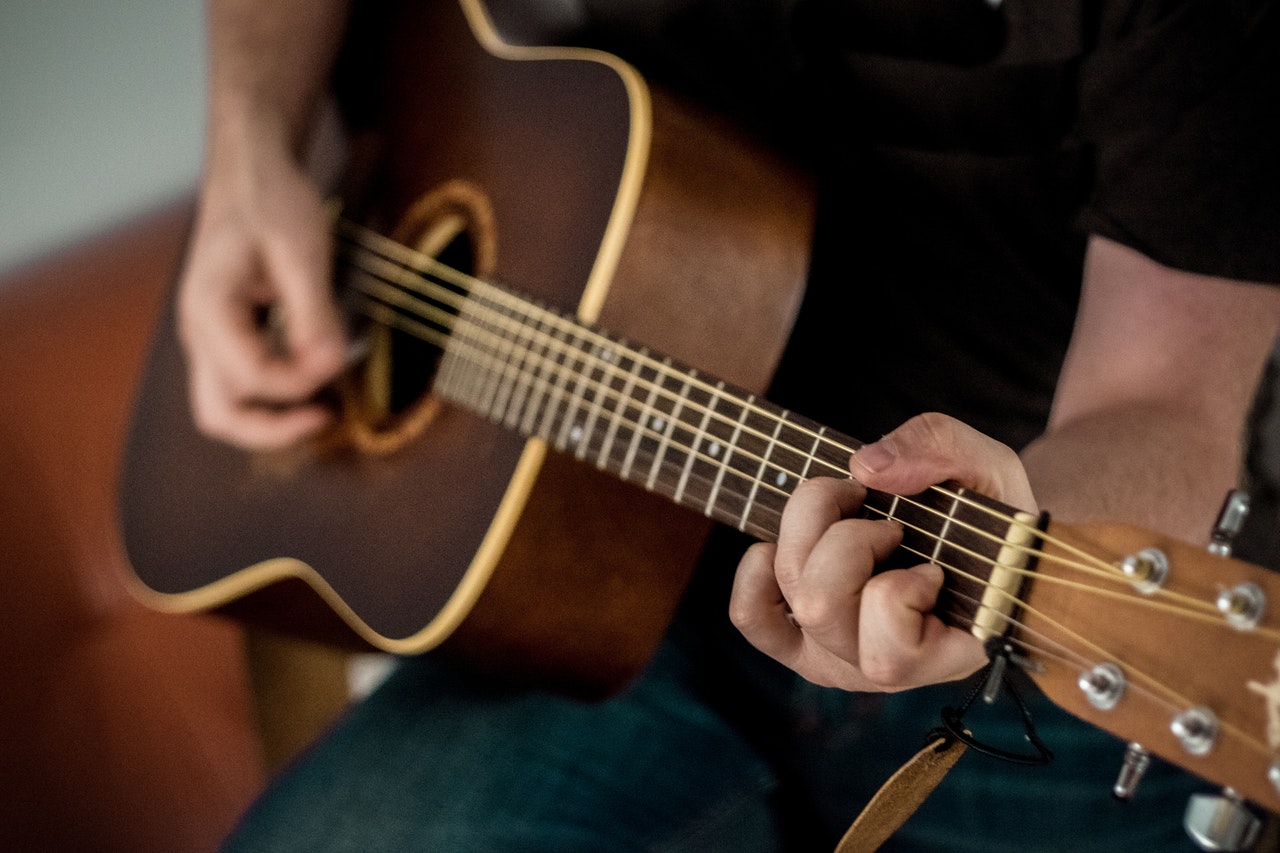Martin Guitars In the Seventies
Share
Mike: And the worst period for Martin guitars is generally considered in the 1970s, but my son Tim has a 1975 D28 that sounds great, you know for whatever reason that guitar has a very which has an excellent sound I’d play other that would just like hope thank you next you know…
Neil: You know I think what happen they just got really inconsistent in the 70s co’z they were branch out they we’re the only banjo companies worldwide with band instrument…
Mike: They bought this Swedish guitar company named Levin you know…
Neil: Oh yeah!
Mike: And they, and that…the man who’s running the company at that time I think it was a Frank Henry Martin…
Neil: I think so; it was Chris’ dad…
Mike: Chris’ uncle…it was previous generation
Neil: Well anyway it was should have known that, I go all this books but…
Neil: Yeah!
Mike: Yeah he was in the branching out though kinds of…
Neil: Right!
Mike: I mean he was in the race car driving…
Neil: Yeah
Mike: He was, and but he didn’t really it wasn’t the focus…
Neil: Focus yeah absolutely
Mike: Yeah, he wanted to make his many guitars and sold and sells as many guitars
Neil: Right
Mike: As possible…and Levin…
Neil: Early they started the cheap one Sigma too
Mike: Right
Neil: That was also a 70s thing…
Mike: Yeah,. So they spent more time concentrating on Elvis other interest that he had at the time but the quality of the guitar suffer eventually there was a strike at the Martin factory, actually the workers are just ready to walk out
Neil: Yeah
Mike: And then, he was eventually relieved at his command so to speak and given a severance package and then the company began to pick itself up gain and focus on what they did best which is making you know really great Acoustic guitar…
Neil: Yeah
Mike: And they did recover but they almost didn’t survive you know the result of all those various poor decisions.
Neil: Right and they had this famous wording for this D76
Mike: Oh God!
Neil: The limited edition 1776
Mike: The bicentennial Martin dreadnought basically a D35
Neil: Right
Mike: With stars on the fret board a little pearl Engel, I knew a guy he had one.
Neil: Yeah
Mike: And 3 piece back like D35, but at the time D35 cost about $600 this thing was $1500 box.
Neil: Right it’s hard to justify, they’re trying to build this collection item and charge you know 2 1/2 times what they were charging for really the same guitar.
Mike: It was yeah, it was kind of tacky really…
Neil: Yeah I remember was one showed up at the store I was teaching at that time a human girls…music…because each dealer was only limited being able to get like 1 or 2. So each dealer only have to sell 1 to get rid of their quota or something…but it was, they really try to build in scarcity…
Mike: Well there was big bicentennial mania thing going on at the time, and I think they built 1776 of them
Neil: Yeah that was the deal.
Mike: And I don’t think they work a lot now I don’t know
Neil: Yeah!
Mike: I’ve never seen one maybe you could go on eBay…
Neil: We really have to check it out…
Mike: Well see what they going for co’z a D35 from that period you can buy from, there not that, guitars from the 70s aren’t really collectible
Neil: They certainly not collectible.
Mike: They’re not what I would call vintage instruments.
Neil: They bad guitars necessarily not everyone, some of them, that was the thing they were so inconsistent I mean we’ve seen at my friend’s repair shop seeing guitars built in the 70s but have the brigde in the wrong place, you can’t set the intonation because the brigde is not in the right place and that like a escape of the factory.
Mike: Yeah
Neil: But again when Chris who’s now on his probably 50s now his quite that around…
Mike: Yeah he is.
Neil: And it seems he runs the comes since he was like 25 or something and really I think definitely put it back.
Mike: Yeah his turn it around they really are doing very well now, they’re making, I saw I think with George Gohu wish I could remember this a little better but he said it took for Martin to build they weren’t build their 1 million guitar not long ago in the last couple of years. And it took them you know 170 odd years to get to 1 million guitars but that rate they’re going now they had 2 million just been a few years.
Neil: Right!
Mike: There just, but there yeah their doing very well.
Neil: Yeah
Mike: I’m glad to see that co’z was there ever a big soul spot from Martin guitars.
Neil: Yeah
Mike: I’ve known quite a number of them you know
Neil: Yeah
Mike: And there are a lot of great guitars being built by a lot of great makers, but you know…
Neil: This is like American history
Mike: Yeah kind of bit (laughing)
Neil: You know partner Matt (Strumming the guitar), my totally guitars partner is just currently starting his search for his first vintage Martin and he had a long post on the web just last night of Christmas or something
Mike: Yeah…
Neil: Of research his done and actually a lot of stuff that you talked about the high blue you know. The 1934 introduction of D’s compare to the 1929 introduction of the OM’s they were trying to think that was actually first thing that trying to get that you can compete in orchestra with that hence the name Orchestra Model.
Mike: Yeah
Neil: But anyway, so he put a whole little history of all the little changes that happen that happen on Martin and one of our forum post their from bunch of people and his let everybody know at totally guitars that his on the search now for a really, a highly collectible guitar. So, if you see anything in the near future, if you see a D28 from the 40s or something.
Mike: His looking for a dreadnought or a triple O, or a size or something?
Neil: Not really, his just looking for his first cool vintage Martin
Mike: Yeah, co’z a smaller body guitar will not, the dreadnought seemed to be the most expensive as far as you know people wanting them from this period.
Neil: I think it improve with most of the age as supposed with smaller bodies a little bit too, I don’t know if thats brand…
Mike: Yeah, but there’s fine sign the smaller ones really balance…
Neil: You owe one like an O18 or something you have… you have a smaller guitar ones?
Mike: I had a couple of mine a single odd 28 it was made in 1890
Neil: Yeah.
Mike: And I wasn’t supposed to be doing it, but I was using extra light bronze on it and you know I didn’t have that, I only have that guitar for about a year a year and a half so but it worked fine with them, but I found since then you really not supposed to do that and you should even used silk and steel.
Neil: Something like lighter
Mike: Which I only like the sound of silk and steel
Neil: That you pretty wanna do, but I can tell it’s built in Nylon string.
Mike: It was
Neil: Yeah..
Mike: I got… And then later I had a single odd 42 which was a similar guitar it was a little upper handed. It had pearl around style 42 it was the second from the top at that time and but in the front it look pretty much of a style 45 and of some 1923. And that was the first year they were starting the braced guitar for steel string they weren’t all made for steel strings at that time. But 1927 it was kind of happy actions that Martins construction did evolve the x-bracing system involves some you know 1830s and 40s was remarkable well suited to a steel string guitar.
Neil: Yeah…
Mike: A lot of Classical players would go for this construction we’re its fine brace and they’re just for Classical music will probably a better sound but Martin really achieve their success I mean they’re pretty successful in 1800s even, but one steel strings came in above their style guitar building which absolutely perfectly suited to it was kind of no one can predict…
Neil: It’s just lack out.
Mike: They just lack out, so by 1927 all their guitars were brace for steel string and eventually they offered models that sort of like classical guitars but they we’re never really successful.
Neil: Yeah
Mike: And got string guitars they even made a few that were like based on x-bracing and they look like a style 28 with 14 frets clear the body and they… this is kind of funny classical guitar bridge were the strings are tied around and they weren’t very you know…they weren’t very few they weren’t successful and not worth much to a collectors because nobody wants them
Neil: Right!
Mike: You know, they were just not people were looking for,,, you know. So they yeah, but I’m just really…
Neil: So this inlays those original?
Mike: No they’re not… I actual… that was this guitar probably you can’t see it here wouldn’t have just dot inlays. This one has a actually he over did it a little bit, what I really wanted…
Neil: It’s steel very soft…
Mike: What I really wanted was for some reason at the time I wanted the same inlay pattern and just the dots but with a little slot of diamonds which is what this are and I just wanted the six but for some reason he put an 8.
Neil: Ok
Mike: And I guess I got carried away or something
Neil: Is this Frankford?
Mike: It’s Frankford at griffin, so he made a new fingerboard forks what happens this guitar in the 1940s during war time Martin was restricted on the amount of metal they could used. And so, the tuners this are not the originals, plastic button units.
Neil: Oh yeah those things crumbled
Mike: Yeah I still have them and really I’m currently choosy but hot metal for the gears and their pretty horrible and sometimes nothing but replicas Waverly makes replicas they’re very high quality tuners but it look like the old ones
Neil: Right
Mike: These are Waverly and this are kind of more typical what Martin is using in the 1930s, but you can in the plastic button ones for people who really want their guitar to look exactly like era it was made. So anyway what happen with these guitars is they have an ebony bar in the neck.
Neil: Oh yeah.
Mike: Rather than they had a metal T-bar meaning if you laid it on it’s end and look at it, it shaped like a T.
Neil: Yeah
Mike: But then they, so that’s what they had in the 1930s and then the early 1940s they had restrictions on how much metal
Neil: Right!
Mike: Was available, so they’re using ebony bar inside the mahogany neck which really…
Neil: Doesn’t do much.
Mike: Doesn’t do much…









